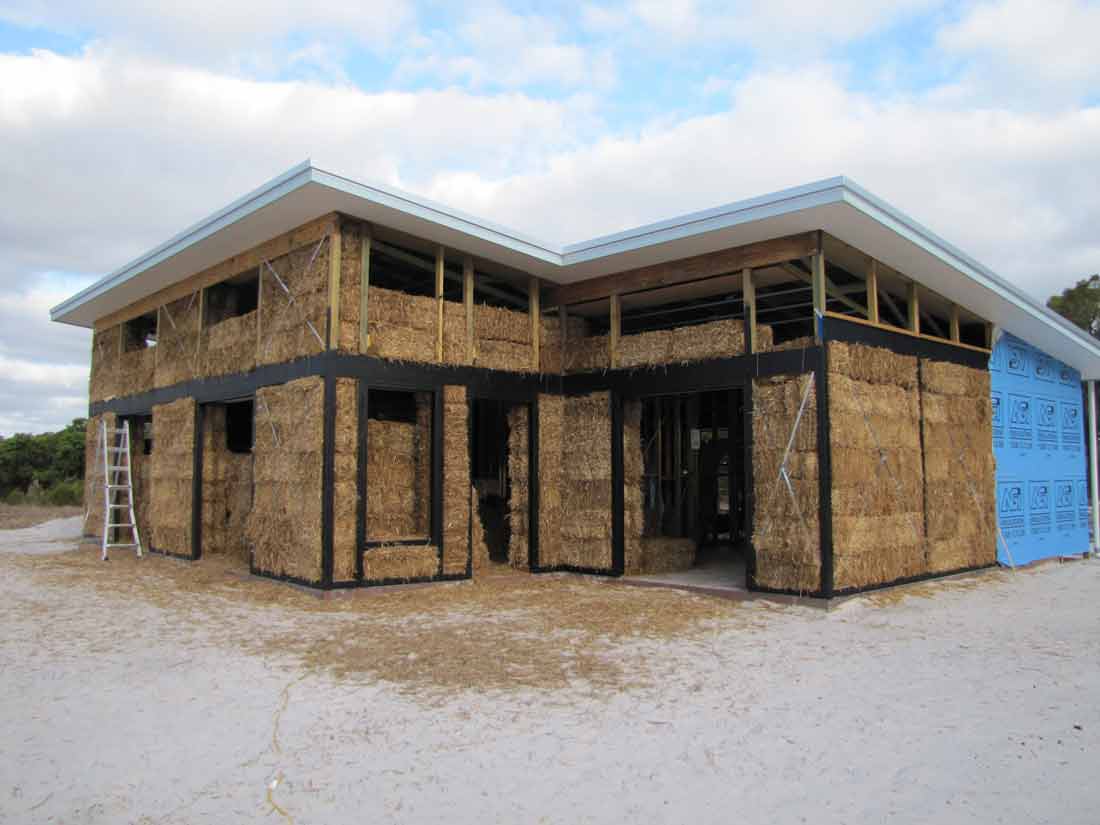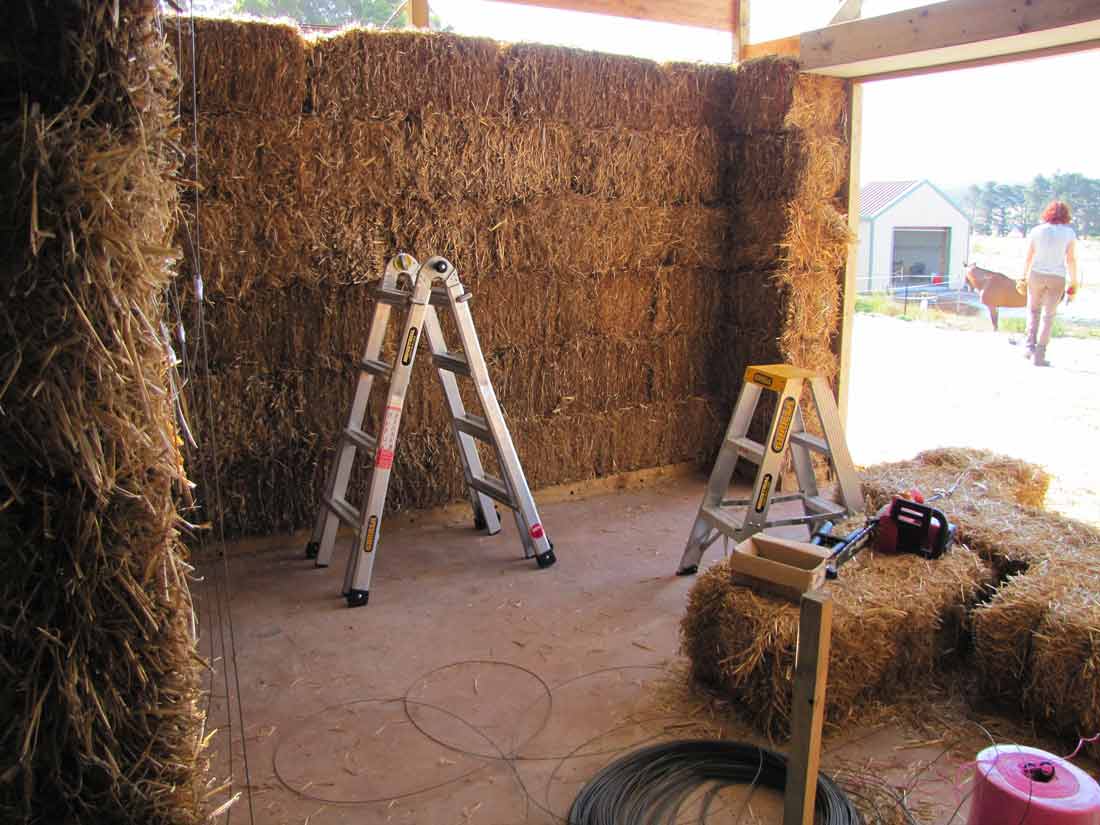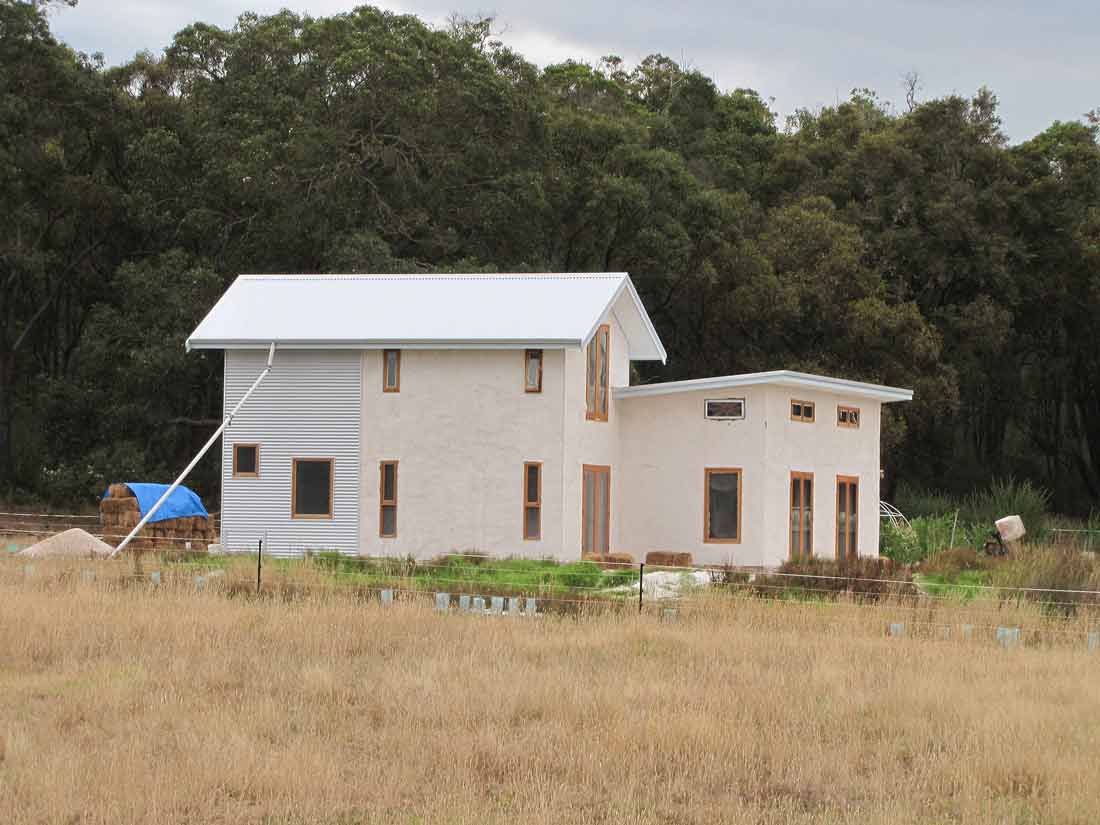When most of us hear the idea of a house made of straw, the first thing that comes to mind is the tale of the Three Little Pigs. But with straw now being recognised as the low carbon, low impact building material, it looks like it might take more than a huff and a puff to knock down this innovation in eco-friendly home design.

The primary reason that straw bales are attracting the attention of today’s environmentally-conscious architects is that they are made from plant matter. Not only is plant matter sustainable, but it’s also packed full of CO2 absorbed from the atmosphere. Burning or decomposing straw releases this CO2, but building with straw effectively locks in this carbon, sealing it inside the building potentially for centuries. By capturing carbon like this, new buildings could become a key part of our efforts to combat the proliferation of carbon in the atmosphere.
Another huge advantage of the straw bale over other recycled building materials is that straw doesn’t require any processing. Recycled plastics and tyres have to go through complicated, expensive transformations before they are ready to be used, but straw can arrive fresh from the farm and be ready to go.
Straw bales have been used in building for centuries, though in the past straw was used not for its environmental effects, but because it was cheap and available. As soon as bricks became easy to manufacture in mass quantities, straw fell by the wayside. Over the last decade, architects have come to see straw as a potentially revolutionary way to lower the carbon footprint of new buildings, but until recently, the size and bulk of the bales has limited what can be built with them. Straw was only suitable for use in unconventional buildings which were designed around its limitations: straw bales are big and bulky, and homes built using them have, until now, been big and bulky too.

However, over the past 13 years, researchers from Bath University’s Department of Architecture & Civil Engineering have been conducting tests and running a number of studies on straw, with the aim of developing a range of straw-based building materials which rival conventional bricks and mortar. The Bath team took on the limitations of the material, and, after years of development, last year they released the world’s first straw panel onto the market. The panels allow almost any type of house to be built entirely from straw, and the concept has already been proven with seven new townhouses already been built in Bristol.
As a result of this development, architects are now free to design far more interesting and appealing straw buildings, and to bring this unusual building material to the forefront of efforts to create the ideal sustainable home. More and more new builds are incorporating straw bales and panels, so in the future, expect to see straw used as a selling point in house listings, as well as plenty of big bad wolves huffing and puffing in vain.
View more images from this straw build here

What is a straw bale building? Basic guide to building straw houses in the UK
What is a straw bale construction?
If you are looking for alternative, energy efficient ways to build your home that may also be cheaper than traditional housing, a straw bale construction is the answer.
Most straw goes to waste as it is no longer used in traditional livestock breeding. It is plowed back into the fields or even burnt. However, people can take advantage of its natural qualities and use it to build highly insulated and highly fire proof buildings. Straw bale hasn’t gone under any manufacturing process; it is natural and can serve as an effective insulation AND building
material. It is also unique, because even though it is an insulating material, it can carry the weight of a whole house.
The two basic types of straw bale construction are load bearing (or Nebraska style) and non-load bearing (or infill). In load bearing construction straw bales are used as large bricks that support all of the building loads, whereas in non-load bearing construction bales fill in between and don’t carry any of the building loads.
Straw bail buildings and fire
According to Canadian, U.S and UK materials laboratories, the straw bale structure wall has proven to be exceptionally resistant to fire. During these tests, standard construction offered only a 30 minute burn resistance. On the other hand, the flames took more than two hours to penetrate the plastered bale walls. It may seem weird, but if the straw bales are tightly compacted, they contain very little oxygen and thus resist combustion. However, loose straw and walls without plaster are at risk for fire.
Straw bail buildings and moisture
Choosing the appropriate straw bale is very important. It should be well-dried when you receive it and until you use it. Therefore, it is better to find a supplier who specialises in straw for straw bale houses and will provide you with dry, consistent bales which minimise labour and secure that no rotting will occur. Straw bales must contain 14% moisture or less when they are installed and have to be properly sealed within the plaster to be protected from water infiltration.
Proper design and construction methods prevent airborne vapour from getting trapped in walls. Therefore, vapour barriers are eliminated and special finishes are selected in order to create walls that “breathe” (for example, earth plasters, lime plasters, natural paints, etc.). Bales allow only moisture to move out of the walls, not air.This fact improves indoor air quality and provides insulation while keeping the bales dry. There are specific international standards (International Residential Code, Appendix M “Straw Bale Structures”) to facilitate this design and construction.
Straw bail buildings and pests
Straw is the stem of any grain plant, such as oat, wheat, rice and barley and is high in cellulose, which is similar to wood, and is therefore not digestible by animals. So straw shouldn’t be confused with hay, which is a food source for many animals. At the same time, no termites or rodents will get into densely packed bales. Pests cannot penetrate into properly plastered walls. Straw bale buildings and durability
There are straw bale houses in Nebraska and Europe since the 1800’s. Straw bales are also considered to be ideal for building “seismic-resistant” constructions. Furthermore, straw bale homes can withstand severe weather and wind. Based on wind tests, straw bale structures see no movement in a sustained 75 mph gale and only 1/16 inch movement with 100 mph gusts.
Finally, straw bale construction can lower your energy costs by 75% and offers great sound proofing. By using this local, agricultural by-product as a building material we also contribute to the protection of the environment. We minimise the amount of straw burned, keeping our air clean, and we reduce the use of fossil fuels needed for material transportation. The basics of straw bale construction are simple to learn and require no expensive tools.

Hi! I’m Chris, the founder of The Organic & Natural Paint Co, and I’m focused on the education and promotion of natural non toxic alternatives to chemical laden everyday products that we just take for granted. We have a choice, and I want to raise awareness of alternative products that don’t actually harm us!
This company is my way of pushing the awareness of better indoor air quality, something that I am personally passionate about due to my own children’s breathing medical conditions. I just couldn’t paint with big brand standard petrochemical paint any longer and wanted another solution.
Read more: About me
Twitter: NaturalPaintCo
Instagram: thenaturalpaintco

